Serial Killer Deep Dive: Edmund Kemper
A Smart Man, a Model Prisoner and a Murderer Who Longed for the Love of His Mother
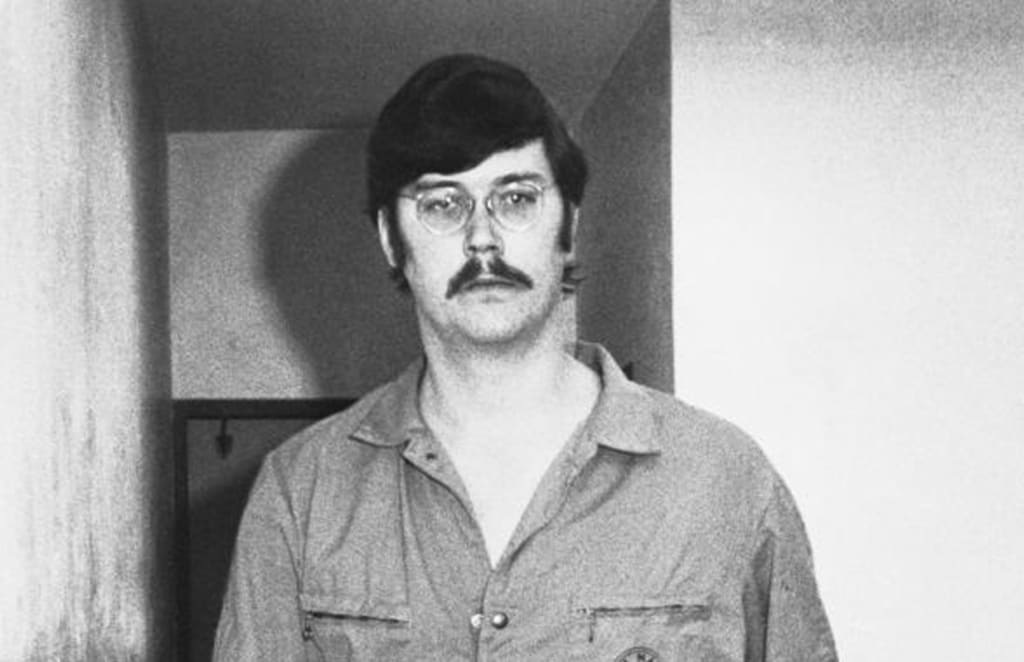
Everyone gets pushed to their limit at some point in their life, but just how much can you handle before you snap? Today we're going to take a look at arguably one of the most intelligent criminals in history. He suffered years of abuse from his mother which he put up with in hopes that one day maybe he could finally have a good relationship with her. But everyone has a breaking point, and sometimes that breaking point is murder.
Edmund Emil Kemper III was born on December 18, 1948 in Burbank, California. He was the middle child and the only son in his family. His parents had an extremely complicated marriage which unfortunately ended in divorce in 1957. Ed's father, who was a World War II veteran, said that, "suicide missions in wartime and the atomic bomb testings were nothing compared to living with her." Following the divorce, Ed moved with his mother and two sisters to Montana. His mother became a heavy alcoholic who neglected her children with Ed being the main target of her abuse. She frequently mocked him for his size seeing as he was abnormally large for his age; when he was born he weighed in at 13 pounds and continued to rapidly grow as he got older. She refused to coddle him because she feared that she would "turn him gay"and told him that he reminded her of his father and that no woman would ever love him. In addition to belittling and humiliating him, she was also physically abusive towards him and often forced him to sleep in a locked basement. It's thought that Ed's mother suffered from borderline personality disorder.
As a child, Ed exhibited strange and dark behaviours. He enjoyed cutting off the heads of his sisters' dolls and performing rituals with them. He would also coax his sisters into playing twisted games with him that he made up. One of the games was called "Electric Chair," in which he had them tie him to a chair, flip an imaginary switch, and he would pretend to writhe in agony until he "died." Ed also displayed acts of animal cruelty; when he was ten-years-old he killed the family cat. He buried it alive, waited for it to die, dug it up, decapitated it and mounted its head on a spike. He killed another family cat at the age of 13 when he perceived it to be favouring his younger sister more than him. He kept its remains in his closet until his mother found them and lashed out at him.
When he was 14, Ed ran away from home in attempt to reconcile with his father in Van Nuys, Los Angeles. Upon arriving, he discovered that his father had remarried and had a stepson. It didn't bother Ed too much because before his parents got divorced, he had a good relationship with his father. He stayed in Los Angeles for a short while before going to live with his grandparents in North Fork as per his father's orders after tension arose between the two. Ed hated living with his grandparents, stating that his grandmother constantly emasculated him which reminded him of how his mother would treat him. Ed bonded with his grandfather over learning how to use firearms but he had his rifle taken away after he killed several birds and other small animals for no apparent reason.
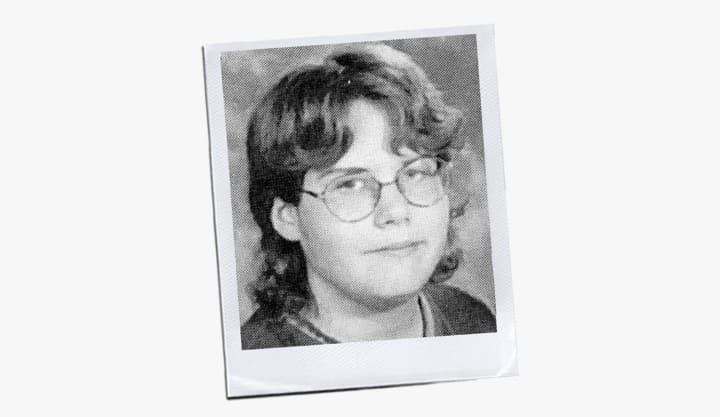
A Photograph of Young Ed
On August 17, 1964, Ed was sitting at the kitchen table with his grandmother when the two got into an argument. Enraged, Ed stormed off and returned with his confiscated rifle. Rolling her eyes, his grandmother said he "better not be going to shoot the birds again," but instead Ed fatally shot her in the head and twice more in her back. He dragged her body out of the kitchen and into her bedroom. His grandfather came home from grocery shopping shortly after the incident and Ed greeted him in the driveway with a gunshot to the face. Unsure of what to do next, Ed phoned his mother and she urged him to contact the local police. He then called the authorities and waited for them to take him into custody.
When interviewed by police about murdering his grandparents, Ed nonchalantly said that he "just wanted to see what it felt like to kill Grandma" and that he killed his grandfather so that he would not have to find out that his wife was dead. Psychiatrist Donald Lunde, who interviewed and studied Ed throughout his adulthood, believed that these murders were his way of avenging the rejection of both his mother and father. Court psychiatrists diagnosed him with paranoid schizophrenia and he was sent to the criminally insane unit of the Atascadero State Hospital.
During his time at Atascadero State Hospital, Ed was studied by several psychiatrists and social workers who strongly disagreed with the court's diagnosis. Their reports stated that Ed didn't display any characteristics of a paranoid schizophrenic and that he actually was a very intelligent person with an IQ of 136. He was re-diagnosed and stated as having passive-aggressive personality disorder. His intelligence was also retested and he scored 145. He was seen as a model prisoner and was described as "a very good worker, which is not typical of a sociopath."

The last report from his probation psychiatrists. Ed had demonstrated that he was rehabilitated and on November 29, 1972, his juvenile records were permanently expunged.
In 1969, Ed was released on parole from Atascadero State Hospital at the age of 21. Despite doctors' recommendations that he not live with his mother who had relocated to Santa Cruz, Ed moved back in with her. He attended community college and eventually found employment in the California Department of Transportation. He also applied to become a state trooper but was rejected because of his large size; this led to him receiving the nickname "Big Ed." Although he appeared to be improving himself, his relationship with his mother didn't change much at all. She continued to belittle him and the two would constantly have hostile arguments which the neighbours often overheard.
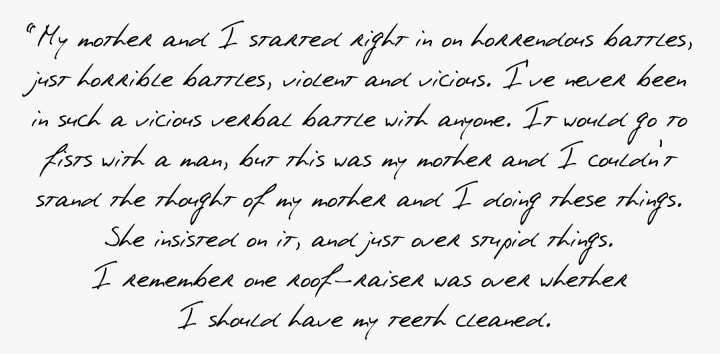
Ed Describing the Arguments He Had With His Mother Upon Moving Back in With Her
Ed eventually saved up enough money to move out. He found a place with a friend in Alameda, but unfortunately he wasn't able to fully escape his mother, seeing as she regularly phoned him and came for surprise visits. In the same year, Ed was also hit by a car while out for a ride on his motorcycle. He received a $15,000 settlement from the civil suit he filed against the driver after being unable to work because of his injuries. While he was unemployed, Ed turned his mind towards other pursuits. He noticed a large amount of young women hitchhiking in the area and his violent desires began to surface. He purchased a car with his settlement money and began storing tools, including a gun, a knife, and handcuffs, in the trunk in case he felt the need to fulfill his urges. Thankfully, Ed's desires didn't kick in for awhile. According to him, he picked up around 150 hitchhikers—any of whom would've been suitable—but let them go peacefully.
On May 7, 1972, Fresno State University students Mary Ann Pesce and Anita Mary Luchessa were hitchhiking to Stanford University. Ed was driving through Berkeley when he spotted the two 18-year-olds and offered to give them a ride. After driving for an hour, Ed changed his route without the girls noticing and reached a secluded wooded area where he forced them out of the vehicle. He had intentions to rape the girls but instead he strangled and stabbed the two to death. In a later interview with authorities, Ed said he recalled feeling odd about his decision to rape the girls. Any sexual contact he made with them made him feel embarrassed. At one point, he accidentally brushed the back of his hand against Mary's breast and said, "whoops, I'm sorry!" After killing the girls, he put their bodies in the trunk of his car and drove back to his apartment. He got pulled over by police on his way home but it was because he had a broken taillight; officers didn't suspect that anything else had occurred. When he got home, he dragged the girls' bodies into his room and took pornographic photographs of their naked corpses and had sex with them before dismembering them. He put the body parts into several plastic bags, which he later abandoned near Loma Prieta Mountain. Before disposing of Mary and Antia's severed heads, Ed engaged in irrumatio, the act of thrusting of one's penis into the mouth, with both of them. A few months later, Mary's skull was found on Loma Prieta Mountain but even after an extensive search, authorities weren't able to locate the rest of her remains. They were also unable to locate Anita's remains.
On September 14, Ed picked up 15-year-old Aiko Koo after she missed the bus to take her to dance class. He drove to a remote area again and pulled a gun out on Aiko before accidentally locking himself out of his car. However, Aiko let him back inside as he had previously gained her trust but unfortunately this was a terrible decision on Aiko's behalf. As soon as he got back inside the car, he choked Aiko until she was unconscious, then raped and killed her. Before returning home, Ed stopped at a nearby bar to have a few drinks. When he exited the bar, he popped open the trunk where Aiko's body was and admired his work. Upon returning home, Ed had sex with the corpse before dismembering and disposing of her remains in a similar manner as his previous victims. Aiko was quickly reported missing by her mother and hundreds of flyers were put up asking for information as to her whereabouts but unfortunately authorities couldn't find anything.
Shortly after the murder of Aiko, Ed moved back in with his mother. On January 7, 1973, he was driving around the Cabrillo College campus when he picked up 18-year-old Cynthia Ann Schall. He drove out to another secluded area and fatally shot her with a .22 caliber pistol. He threw her body into the trunk of his car and drove back to his mother's house where he kept the corpse in his room overnight. When his mother left for work the next day, Ed took Cynthia's body out of his closet, had sex with it, and then dismembered it in his mother's bathtub. He discarded the remains by throwing them off a cliff but kept the severed head for several days, regularly engaging in irrumatio with it. He then buried the head in his mother's garden, making sure that it was facing upward towards her bedroom because his mother "always wanted people to look up to her." Over the next few weeks, police found her remains but didn't have a lead on her killer.
Suspicions of a serial killer targeting hitchhikers arose amongst the Santa Cruz area. Students were advised to only get into cars with the local university's sticker on them. Since Ed's mother worked at UCSC, he was able to obtain such a sticker. On February 5, Ed left his house after a heated argument with his mother, enraged and in the mood to kill. He picked up UCSC students Rosalind Heather Thorpe and Alice Helen Liu on campus. Alice was hesitant to enter the car at first but after seeing her friend get in, she decided to as well. Ed drove to a secluded area, then fatally shot the two girls with his .22 caliber pistol. He wrapped their bodies in blankets and brought them back to his mother's place. He beheaded them in his car and brought one of them into the house to have sex with. The next morning, he dismembered the rest of their bodies, removed the bullets and discarded their remains at Eden Canyon. When questioned in a later interview about his passion for removing the victim's head and having sex with it, Ed explained:
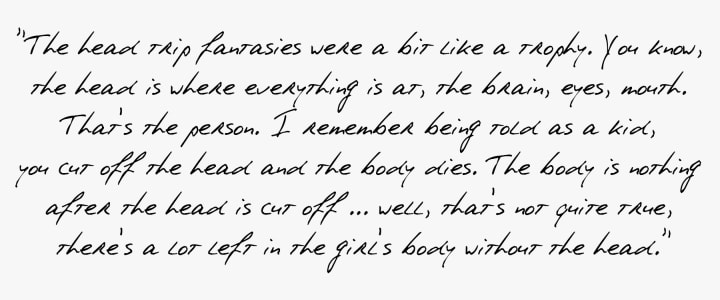
On April 20, Ed was at home waiting for his mother to return from a party. He fell asleep but was woken up by the sound of her entering the house. She made her way to her bedroom, crawled into bed, and began reading a book. Ed quietly entered his mother's room and with a scowl on her face, she looked up at him and said, "I suppose you're going to want to sit up all night and talk now." Ed paused for a minute before responding, "No, good night." He left her room and returned to his own. After his mother had fallen asleep, Ed returned to her room. He loomed over her, anger building, and then he snapped. He bludgeoned her to death with a claw hammer. He bashed her head in, then slit her throat with a knife and decapitated her. He engaged in irrumatio with her severed head before using it as a dart board. He put her head on a shelf and screamed at it for an hour while throwing darts at it. He cut out her tongue and larynx and put them in the garbage disposal which unfortunately couldn't break down the parts. Ed chuckled to himself and later said, "that seemed appropriate... seeing as she bitched and screamed and yelled at me over so many years." He then had sex with her corpse and hid it in a closet. After going out for a drink, he invited his mother's best friend, Sarah Taylor Hallett over for dinner and a movie. When Sarah arrived, Ed strangled her to death, decapitated her, and stuffed her body in the closet along with his mother's. The reason he murdered Sarah was so that he could plant the alibi that the two women had gone on a trip for the weekend if the two were ever reported missing.
Following the murders, Ed took Sarah's car and left California. He eventually arrived in Pueblo, Colorado where he then found a phone booth and called the police. He confessed to the murders of his mother and Sarah but the police didn't take him seriously. Several hours later, he called back again and asked to speak to an officer that he personally knew. He confessed for the second time to the murders, then waited in his car for police to come arrest him. When asked what motivated him to turn himself in, he replied:

Ed was convicted of eight counts of first-degree murder. Due to his extremely detailed confession, his counsel's only option was for him to plead guilty by reason of insanity but court appointed psychiatrists found him to be legally sane. One of the psychiatrists, Dr. Joel Fort, interviewed Ed more thoroughly and looked into his juvenile record. During an interview where Ed was under truth serum, he said that he engaged in cannibalism. Allegedly, he sliced flesh from the legs of his victims, then cooked and consumed these strips of flesh in a casserole; Ed later recanted the confession of cannibalism.

On November 1, Ed took the stand and testified that he killed the women because he wanted them "for myself, like possessions." He tried to convince the jury that he was insane because he believed that his actions could only be committed by someone with an abnormal mind. He said two beings inhabited his body and that when the killer personality took over, it was "kind of like blacking out."
On November 8, the jury declared Ed guilty on all counts. When asked by the judge what he thought his punishment should be, Ed insisted that he be tortured to death. However, capital punishment was temporarily suspended in California at the time so instead he received life imprisonment. He is currently serving his time at California Medical Facility in Vacaville.
It's clear to see that Ed's relationship with his mother severely affected him. From a very young age, he experienced a lot of psychological abuse from her. It's unfortunate that he didn't spend more of his childhood with his father. After the divorce, if he went to live with his father instead of his mother, would Ed be a completely different person? Could this have prevented his murderous urges?
Despite doctor's recommendations after his juvenile incarceration, Ed went back to live with his mother. While he's viewed as one of the smartest criminals in history, many people criticized him for this decision saying that if he was so smart, why would he willingly go back to an abusive household? Perhaps Ed was continuously hoping that his relationship with his mother would improve. He wanted to love her and he wanted her love in return. Is this why it took so long for him to actually kill her? Did he suppress the urges by murdering other victims because he was hoping that each time their relationship would get better and he wouldn't have to kill her? As mentioned earlier, Ed was described as very passive-aggressive towards his mother —was dismembering Cynthia in his mother's bathroom and placing her head facing her bedroom his way of saying "fuck you" to her without her actually knowing? Did he want to do all these things behind her back and got gratification out of knowing something that his mother didn't? Was it a secret slap to her face? Going off the theory that he murdered other victims to suppress his desires to kill his mother, was their final conversation the moment when he knew that it just wouldn't get better? It wasn't an overly belittling conversation; just a simple "what do you want?" was enough to push Ed over the edge and finally give in to all of the anger and violence that he had suppressed over the years.

Ed in His Cell Crafting Ceramics
In the 70s, Ed shared the same prison block with notorious criminals including serial killer Hebert Mullin and murderous cult leader Charles Manson. Standing at 6' 9" tall and weighing over 250 pounds, Ed wasn't bothered by many of the inmates. He was a relatively peaceful person but still used his tall, intimidating stature to bully and manipulate other inmates, including Herbert. Ed said that Herbert "had a habit of singing and bothering people when somebody tried to watch TV, so I threw water on him to shut him up. Then, when he was a good boy, I'd give him peanuts. Herbie liked peanuts. That was effective, because pretty soon he asked permission to sing. That's called behaviour modification treatment." This goes to show just how smart Ed was. His interviews with investigators are considered extremely notable for their contribution to understanding the mind of serial killers. FBI profiler John E. Douglas described Ed as one of the brightest prison inmates he's ever interviewed, saying that he was capable of giving officers a rare insight on violent criminals. Even Ed himself said that he willingly participated in the interviews to save others like himself from killing and so that society would have a better understanding of serial killers. He was very aware of the reasons behind why killed and in interviews he spoke similar to how a psychiatrist would. While Ed was a fairly calm and compliant person during the interviewing process, there were times when he displayed potentially threatening behaviour. One time when Douglas' colleague Robert Ressler was in a cell alone with him, Ed noticed that Ressler had pressed a hidden button to call a guard to come open the cell. Ressler began growing frantic when the call had not been received and started repeatedly pressing the button. Ed told him, "Relax. They're changing the shift." He then smirked and said, "If I went apeshit in here, you'd be in a lot of trouble, wouldn't you? I could screw your head off and place it on the table to greet the guard." When the guards arrived, Ed said that he was just joking around but Ressler refused to enter a cell with him alone again. This resulted in the FBI putting a policy into place stating that interviews with serial killers were to be conducted in pairs.
To this day, Ed is still considered a model prisoner. As of 2015, he's in charge of scheduling other inmates' appointments with psychiatrists and has mastered the art of crafting ceramic cups. He also creates books on tape for the blind, having spent over 5,000 hours narrating books. His last parole hearing was in July 2017, to which he was denied. His next hearing is in 2024.

The reason I became so fascinated with Edmund Kemper was because of his portrayal in the Netflix series Mindhunter. The actor who plays him does an amazing job at capturing Ed's personality and I felt like I was watching the real deal.
So as an ending to this article, can we just appreciate Cameron Britton's performance as Edmund Kemper?
I also highly recommend watching the following documentary. It's fascinating listening to the way Ed speaks.
Sources
https://en.wikipedia.org/wiki/Edmund_Kemper
https://www.biography.com/people/edmund-kemper-403254
http://criminalminds.wikia.com/wiki/Edmund_Kemper
https://didyouknowfacts.com/co-ed-killer-twisted-life-edmund-kemper/
About the Creator
Jenny Reed
Twenty-something based in Toronto. Lover of horror, true crime & pugs.

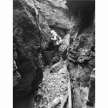
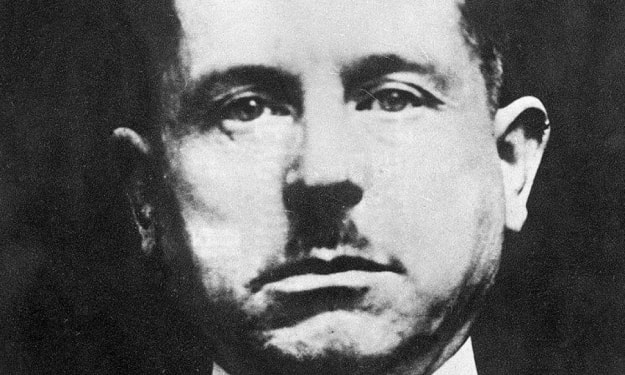



Comments (1)
The boy pictured as young Ed Kemper - about age 12 with long hair - is NOT Ed Kemper. It's Luke Woodham. In 1997, Woodham killed his mother and two classmates. He wounded seven other people in a school shooting in Pearl, Mississippi, USA. This photo is widely mislabeled and presented as Kemper. Yet, when Kemper was about 12 years old (1961,) school photos of boys would show short hair and shirts with collars.